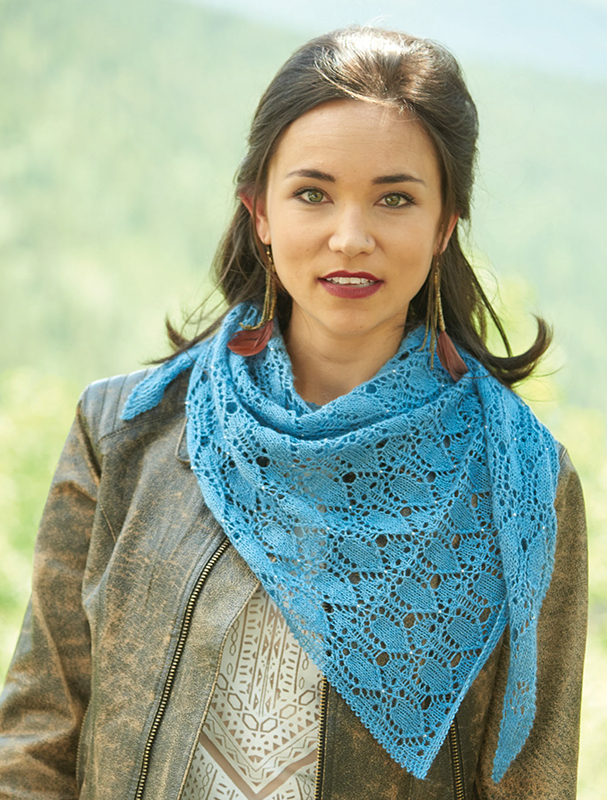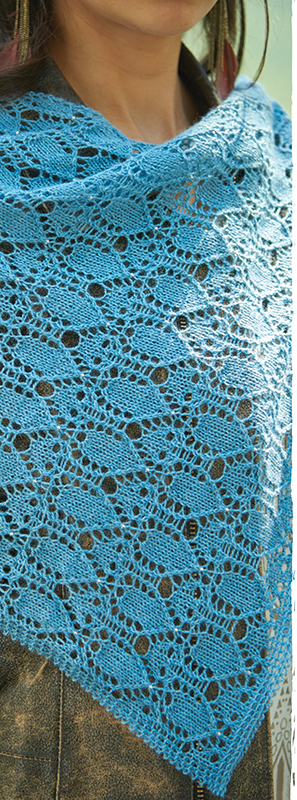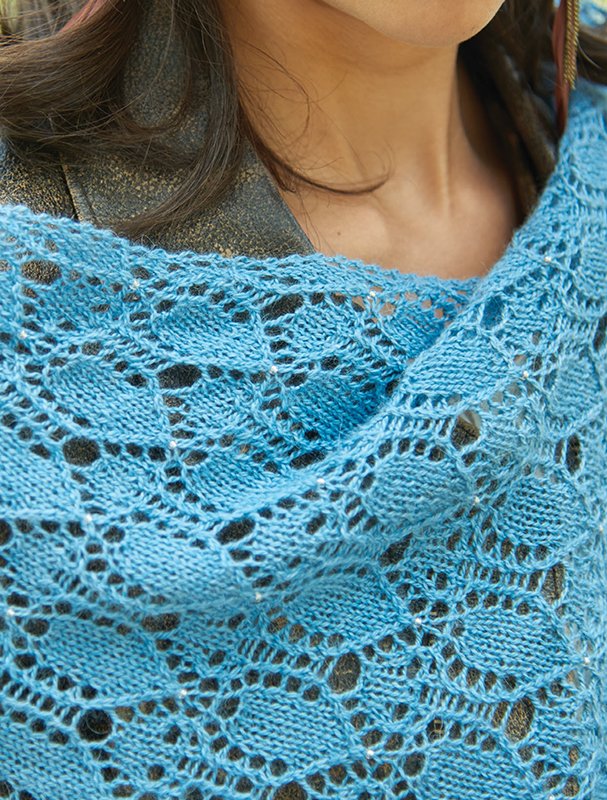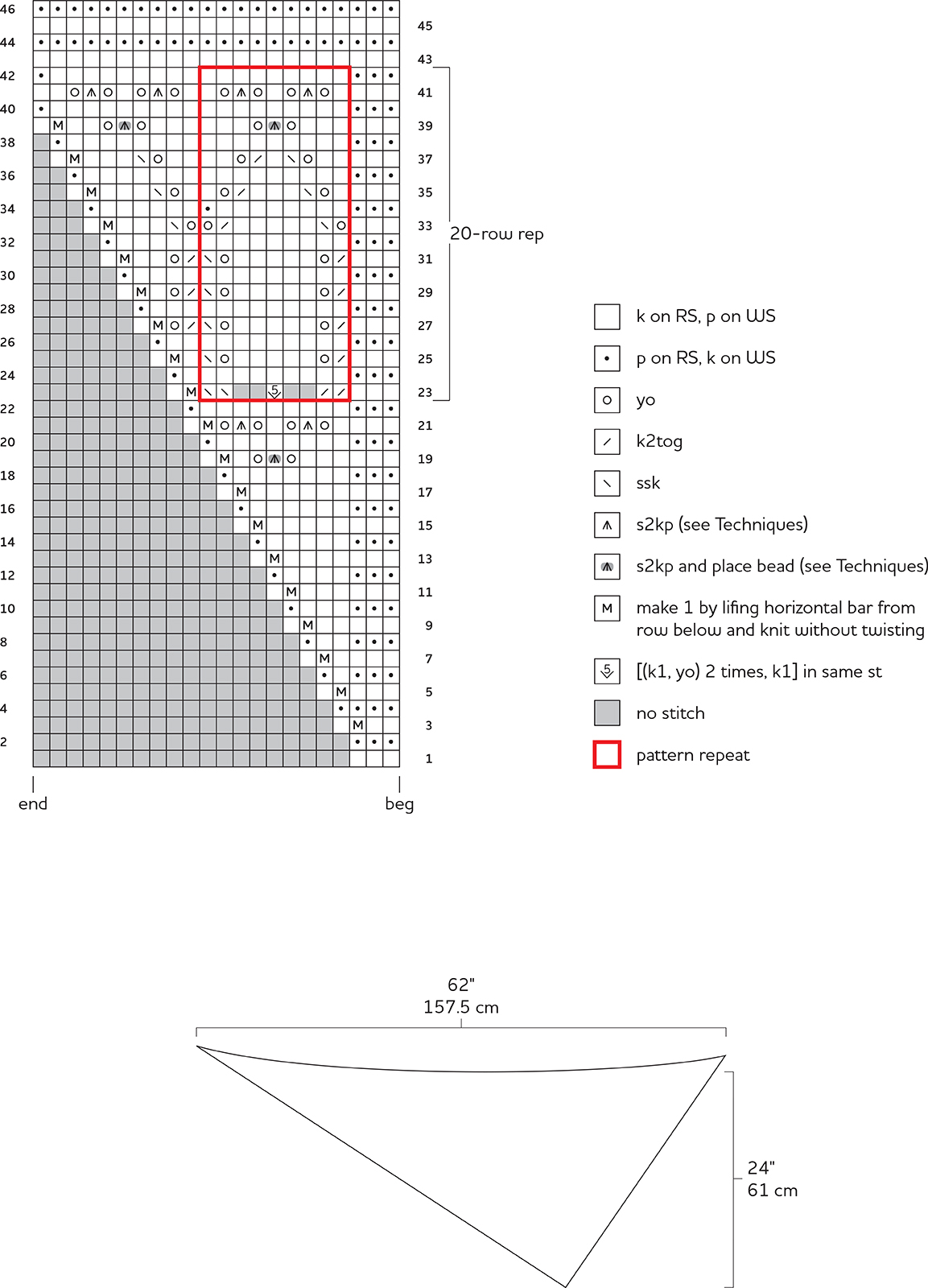
Franconia Traverse is a nine-mile section of the Appalachian Trail that runs through the White Mountains, in New Hampshire. If you look carefully you can see alpine wildflowers along the way.
A scalene triangle is one in which all three sides and all three angles are different. A 30-60-90 triangle is a very special example. The longest side (the hypotenuse) is opposite the one 90-degree (right) angle and is twice the length of the shortest side. That shortest side is the one on our knitting needle as we work this piece from the first angle, increasing along only one edge, every other row as we knit. This piece is worn with the hypotenuse as the top edge and is asymmetrical. You can continue increasing, repeating the row repeat, for as long as you like, limited only by your yarn and bead supply.

52" (132 cm) wide along the hypotenuse and 211⁄2" (54.5 cm) long at center back.
Laceweight (#0 Lace).
Shown here: The Fibre Company Road to China Lace (65% baby alpaca, 15% silk, 10% camel, 10% cashmere; 656 yd [600 m]/100 g): Blue Diamond, 1 skein.
Size U.S. 2 (2.75 mm): 24" (60 cm) circular (cir). Adjust needle size if necessary to obtain the correct gauge.
20 g Miyuki 8/0 Japanese seed beads in sparkling pewter-lined crystal; size U.S. 14 (0.6 mm) steel crochet hook, or size to fit beads; markers (optional); tapestry needle; stainless T-pins; blocking mats; three 60" (152.5 cm) lengths of flexible blocking wire.
24 sts = 4" (10 cm) over St st, blocked and relaxed.
Beads: See Techniques.
A word about slipping selvedge stitches: Don’t! This piece was designed to block freely, and slipped selvedge stitches will create a less flexible edge
There will be enough yarn to make the wrap larger if desired. Should you choose to make the wrap larger, be sure to get more beads.

CO 3 sts using long-tail method (see Techniques).
Row 1: (RS) Beg at right edge of chart, k3.
Row 2: (WS) Beg at left edge of chart, k3.
Work Rows 3–42 as established—22 sts.
Next row: (RS) Working Row 23 of chart, beg at right edge of chart, work 3 sts before rep, work 9-st rep to last st, work 2 sts at left edge of chart after rep—1 st inc’d.
Next row: Working Row 24 of chart, beg at left edge of chart, work 2 sts before rep, work 9-st rep to last 3 sts, work 3 sts at right edge of chart after rep.
Work chart Rows 25–42, then rep Rows 23–42 thirteen more times, working one additional rep each time—148 sts.
Work chart Rows 43–46.
BO as foll, making sure to work evenly but loosely: K2, return 2 sts just worked to left needle tip, k2togtbl, [k1, return 2 sts just worked to left needle tip, k2togtbl] to end. Cut yarn leaving a 9" (23 cm) tail, pull tail through rem st.
Weave in ends but do not trim. Soak in cool water until fully saturated (about 30 minutes). Press to remove water, roll in a towel, and blot to remove extra water.
Weave a blocking wire through the vertical strand of garter st along each edge. Pin out to schematic measurements, so longest edge (the hypotenuse) has a slight concave shape. Allow it to dry completely. Shawl will relax to finished measurements when pins are removed. Trim ends.


